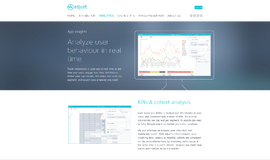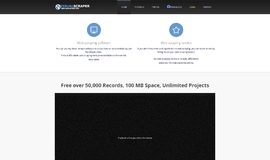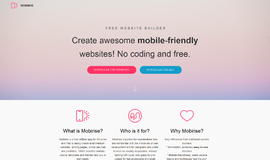6 Best JavaScript Frameworks to Learn In 2016
If all roads lead to Rome, which one should we take? JavaScript has been known in the web development community since the arrival of modern technologies that helped in the building of the front-end of websites. It supports HTML (that is used for the presentation or layout of the pages) by extending its several functionalities and providing the logical executions on the website. Without it, websites can't have any interactive features.
The modern culture of Frameworks and Libraries has risen from the abyss when older technologies started to separate the functionalities into modules. Now, instead of supporting everything in the core language, the developers made it free for everyone to create libraries and frameworks that enhance the functionality of the core language. This way, the flexibility of the language has been increased dramatically.
If you have been using JavaScript (along with JQuery) to support HTML, then you know that it requires a great deal of effort and complex in code to develop and the maintain a large application. JavaScript Frameworks help to quickly build interactive web applications (which includes both single page and multiple page applications).
When a newbie developer wants to learn JavaScript, he is usually attracted to JavaScript Frameworks which, thanks to the huge rise in their communities, any developer can easily learn from online tutorials and other resources.
But, alas! Most programmers find it hard to decide which framework to learn and use from. Thus, in this article, I am going to highlight the 6 Best JavaScript Frameworks to learn in 2016. Let's get started!
6 Best JavaScript Frameworks to Learn In 2016
1) AngularJS
(Note: This is my personal favorite JavaScript Framework)
Whenever someone hears about JavaScript, there is a high probability that they have already heard about AngularJS, as this is the most commonly used JavaScript Framework among the JavaScript community. Released in 2009, it was developed by Google (which is convincing enough to use it), and it's an open-source project, which means you can read, edit and modify the original source code for your specific needs without giving any money to its developers (isn't that cool?).
If you have difficulty building complex web applications through pure JavaScript code, then you will jump out of your seat in excitement to know that it will dramatically ease your life. It supports the MVC (Model–view–controller) design paradigm which supports standard two-way data binding. In case you are not familiar with MVC, then know that it just means that your data is updated on both the front-end (i.e. user-interface side) and back-end (i.e. coding or server side) whenever it detects some changes in the engine.
MVC drastically reduces the time and efforts needed for building complex applications, as you need to focus on one area at a time (because DOM programming interface synchronizes the view and the model). As the View components are separated from the Model components, you can easily build reusable components for amazing and cool looking user-interfaces!
If for any reason, you have used TypeScript (which is a language similar to JavaScript), then you will feel at home with AngularJS, as its syntax highly resembles the TypeScript syntax. This choice was made to attract the audience as TypeScript was gaining popularity.
Angular 2.0 has recently been released, which claims to improve the performance of mobile, which is enough to convince new developers that this framework is high in development and updates regularly.
There are many users of AngularJS, including (but not limited to) Udemy, Forbes, GoDaddy, Ford, NBA, The Oscars, etc.
This JavaScript Framework is highly recommended for anyone who wants a powerful MVC framework with a strong and modern infrastructure that takes care of everything for you to build single page applications. This should be the first stop-shop for any experienced JavaScript developer.
2) React
Similar to AngularJS, React is also an MVC (Model-View-Controller) type framework, however, it focuses entirely on the View components (as it was specifically designed for the UI) and can be seamlessly integrated with any architecture. This means you can use it right away for your websites!
It abstracts the DOM programming interface (and thus uses the virtual DOM) from the core functionality, so you get extremely fast rendering of the UI, which enables you to use it from node.js as a client-side framework. It was developed as an open-source project by Facebook with various contributions from other people.
If you have seen and like Facebook and Instagram’s interfaces, then you will love React. Through React, you can design simple views for each state in your application, and when the data changes, then it updates automatically. Any kind of complex UIs can be created, which can be reused in whatever applications you want. For the servers, React also supports rendering using node.js. React is flexible enough to use with other interfaces.
Apart from Facebook and Instagram, there are several companies that use React, including Whatsapp, BBC, PayPal, Netflix, Dropbox, etc.
I would highly recommend this Framework if you just need a front-end development Framework to build an incredibly complex and awesome UI through the power View Layers, but you are experienced enough to handle any kind of JavaScript code, and when you don't require the other components (as you can integrate them yourself).
3) Ember
This JavaScript Framework was released in 2011 as an open-source project by Yehuda Katz. It has a huge active community online, so the moment you face any problem, you can ask them. It uses many common JavaScript idioms and best practices to ensure that developers get the best right out of the box.
It uses Model–view–viewmodel (MVVM) design pattern, which is slightly different than MVC in the sense that it has a binder to help the communication between the view and data binder.
For the fast server-side rendering of a DOM programming interface, it takes the help of Fastboot.js, so the resulting applications have extremely enhanced performance of complex UIs.
Its modern routing and model engine supports RESTful APIs, so you are ensured that you are using the latest technology. It supports Handlebars integrated templates that update the data changes automatically.
In 2015, it was named the best JavaScript Framework, competing against AngularJS and React, which should be enough to convince you about its usability and desirability in the JavaScript community.
I would personally highly recommended this JavaScript Framework to those who don't necessarily need great flexibility or a large infrastructure, and just prefer to get things done for coping with deadlines.
4) Adonis
If you have ever used Laravel and NodeJS, then you will feel extremely comfortable using this Framework, as it combines the power of these both platforms resulting in an entity that looks incredibly professional, polished and yet sophisticated for any kind of modern application.
It uses NodeJS, and thus it's pretty much a back-end framework with several front-end features (unlike the previous JavaScript Frameworks that I mentioned that were mostly front-end frameworks), so newbie developers who are into back-end development will find this framework quite attractive.
Many developers prefer SQL databases (due to their increased interaction with data and several other features) over NoSQL, so this is reflected in this framework, which makes it relatively more compliant with the standard and more accessible to the average developer.
If you are the part of any PHP community, then you must know about the Service Providers, thankfully, Adonis also has the same PHP like flavour in it, so you will feel at home using it.
Of all its best features, it has an extremely powerful routing engine which supports all the functions for organizing and managing application states, an error handling mechanism, SQL ORM for writing database queries, generators, arrow functions, proxies and so on.
I would recommend this Framework if you love to use stateless REST APIs for building server-side applications, as you will be quite attracted to it.
5) Vue.js
This open-source JavaScript framework was released in 2014, supporting an extremely simple API for developing the Reactive components for Modern Web Interfaces. Its design emphasized the ease of use. Like Ember, it uses the Model–view–viewmodel (MVVM) design paradigm which helpes in the simplification of the design.
The attractive feature in this framework is that you can use selective modules with it for your specific needs. For example, you need to write simple HTML code, grab the JSON and create a Vue instance to create the small effects that can reused!
Similar to previous JavaScript Frameworks, it uses two-way data binding to update the model and view, plus it also uses binder for communication between the view and data binder. This is not a full-blown Framework as it focuses entirely on the View Layer, so you would need to take care of other components on your own.
If you are familiar with AngularJS, then you will feel at home here, as it heavily incorporates the architecture of AngularJS, so many projects can be easily transferred to this Framework if you know the basics of JavaScript.
I would highly recommend this JavaScript Framework if you just want to get things done or gain JavaScript programming experience, or if you need to learn the nature of different JavaScript Frameworks.
6) Backbone.js
This framework can be easily integrated to any third-party template engine, however, by default it supports Underscore templates, which is the only dependency (along with JQuery), thus it is known for its extremely lightweight nature. It has the RESTful JSON interface with the support of MVC (Model–view–controller) design paradigm (that updates the front-end and back-end automatically).
If you ever used the famous social news networking service reddit, then you will be interested to hear that it uses the Backbone.js for several of its single-page applications. The original author of the Backbone.js created the Underscore templates as well as CoffeScript, so you are assured that the developer knows his stuff.
This framework provides models with key-value, views and several modules within a single bundle, so you don't need to download the other external packages, saving you time. The source-code is available on Github, which means you can further modify it for your needs.
If you are just looking for a startup framework to quickly build single-page applications, then this framework is for you.
Conclusion
So, I have just highlighted the 6 Best JavaScript Frameworks in this article in the hopes that it will help you determine the best JavaScript Framework for your tasks.
If you’re still having trouble deciding the best JavaScript Framework out there, then please understand that the world values action and not perfectionism; it's better to pick any from the list and then find out if it suits your interests, and if it doesn't then just try the next one. Rest assured though that any Framework from the list will be good enough.
Recently we have released an updated article entitled 5 JavaScript Frameworks to learn in 2017. Take a look and see what's changed since last year! Think we've missed something? Feel free to comment below.
Recent Stories
Top DiscoverSDK Experts

Compare Products
Select up to three two products to compare by clicking on the compare icon () of each product.
{{compareToolModel.Error}}
























{{CommentsModel.TotalCount}} Comments
Your Comment